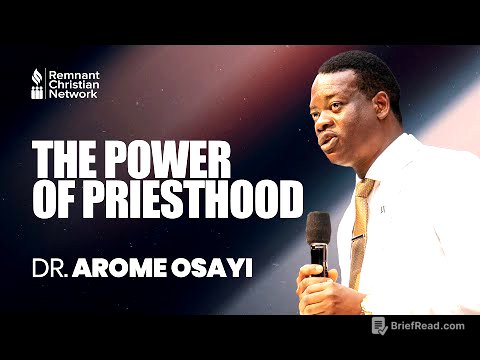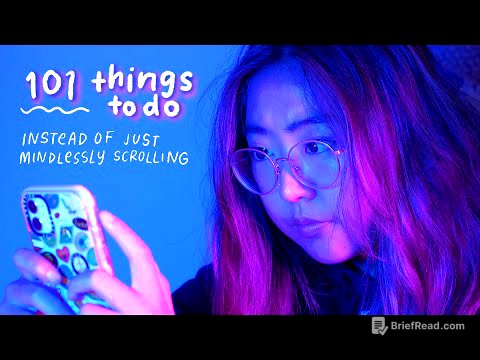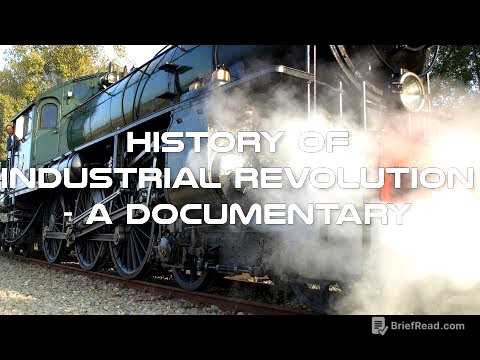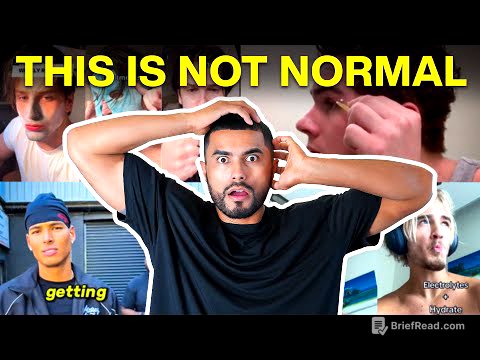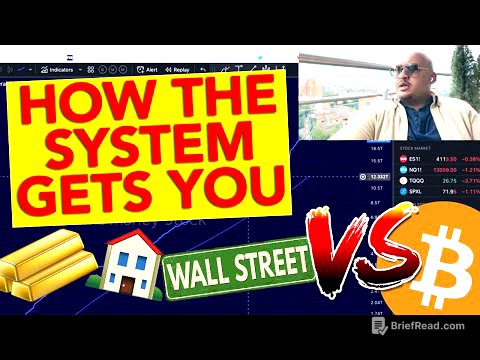TLDR;
This video provides a comprehensive guide on how to learn video editing quickly and effectively. It outlines six key steps: mindset, choosing software, learning core concepts, continuous learning, working with others, and making yourself more valuable. The video emphasizes the importance of storytelling, understanding your audience, and developing a strong personal brand. It also recommends using Skillshare for learning video editing software and highlights the importance of communication and professionalism in the industry.
- Mindset: Focus on storytelling, think like your audience, and visualize your "why".
- Software: Choose a software that suits your needs and use Skillshare to learn it effectively.
- Core Concepts: Master composition, storytelling, sound design, and pacing.
- Continuous Learning: Never stop learning and seek opportunities to improve your skills.
- Working with Others: Find a job at an agency, get a mentor, join a community, and work with clients personally.
- Make Yourself More Valuable: Develop a strong personal brand, acquire complementary skills, and prioritize communication and professionalism.
Exactly How I Would Learn Video Editing All Over Again [0:00]
This video outlines a six-step plan for learning video editing quickly and effectively. The speaker, Gavin Herman, shares his experience and insights gained over 10 years in the industry. He emphasizes the importance of a strong mindset, choosing the right software, mastering core concepts, continuous learning, working with others, and developing a personal brand to stand out in the competitive video editing landscape.
Step 1: Mindset [0:23]
The first step in learning video editing is to develop the right mindset. Gavin stresses that rushing into editing without a clear understanding of the fundamentals is like trying to run before you can walk. He recommends focusing on three key mindset shifts:
- Story First, Tools Second: Instead of focusing solely on mastering software, prioritize storytelling. Recognize that your primary role is to be a storyteller who uses video editing as a tool to engage your audience.
- Think Like Your Audience: Remember that you are creating videos for others to watch. Consider your audience's preferences, interests, and expectations when making editing decisions.
- Visualize Your Why: Having a strong reason for pursuing video editing will help you stay motivated and committed. Identify your goals and passions, and use them as fuel to drive your learning journey.
3 Mindset Shifts You to Focus on [0:37]
This section delves deeper into the three mindset shifts discussed in the previous chapter. Gavin emphasizes the importance of prioritizing storytelling over technical skills, understanding your audience's preferences, and having a clear "why" to keep you motivated.
Story First, Tools Second [0:42]
Gavin shares his personal experience of initially focusing on technical proficiency in software like Premiere Pro, only to realize later that he was missing the crucial element of storytelling. He emphasizes that mastering the tools is important, but it's secondary to understanding how to use them to tell compelling stories that resonate with your audience.
Think Like Your Audience [1:13]
This section highlights the importance of considering your audience's preferences when making editing decisions. Gavin encourages viewers to ask themselves questions like: "Should I make this video energetic or laid-back?", "What music will resonate with my audience?", and "Should I use sophisticated or playful visuals?". He emphasizes that understanding your audience is key to creating engaging and impactful videos.
Visualize Your Why [1:37]
Gavin stresses the importance of having a clear "why" for pursuing video editing. He shares his own journey, starting with making soccer videos for friends, then moving on to funny gaming videos, and eventually combining his passions to create soccer gaming content. He emphasizes that having a strong "why" provides motivation and purpose, especially when facing challenges or setbacks.
Step 2: Choose a Video Editing Software [2:19]
The second step is choosing a video editing software. Gavin acknowledges that this is a common question for new editors. He emphasizes that the choice of software is less important than how you use it. He personally uses Adobe Creative Suite (Premiere Pro, After Effects, Photoshop, Illustrator, Figma), but also recommends DaVinci Resolve as a free and powerful alternative.
Learning How to Use a Video Editing Software [2:52]
This section focuses on the challenge of learning how to use video editing software. Gavin acknowledges that while YouTube tutorials are helpful, they don't always provide a structured learning path. He recommends Skillshare as a platform that offers curated courses and learning paths designed to help users master specific software and skills. He highlights Skillshare's sponsorship of the video and offers a free trial to viewers.
Step 3: Learning Core Concepts [4:17]
Once you've chosen and learned your software, it's time to focus on core video editing concepts. Gavin emphasizes the importance of mastering these fundamentals to create high-quality videos.
Avoid This Mistake at All Costs [4:26]
Gavin shares a mistake he made early in his career: trying to learn everything at once. He advises against jumping between different software and tutorials, as it can be overwhelming and distract from your main goal of improving your video editing skills.
Fundamentals to Focus on [4:54]
Gavin outlines the key fundamentals that he wishes he had focused on earlier in his career:
- Composition and Design: This involves understanding how to arrange elements on the screen to guide the viewer's eye. Key concepts include hierarchy, color, and balance.
- Storytelling: Every video should have a clear beginning, middle, and end. Focus on creating an emotional impact and ensuring that every shot contributes to the overall story.
- Great Sound Design: Sound is crucial for creating an immersive and engaging experience. Ensure clear dialogue, use sound effects to emphasize visual motion, and choose music that sets the right mood.
- Pacing Your Videos: Pacing keeps your audience engaged throughout the video. Use fast cuts for action-packed moments, tighten up sections that drag, and slow down for emotional or dramatic parts.
Using Storytelling [5:47]
This section focuses on the importance of storytelling in video editing. Gavin emphasizes that without a story, footage is just a collection of random clips. He encourages viewers to consider the emotions they want to evoke in their audience and use editing decisions to guide those feelings.
Great Sound Design [6:13]
Gavin highlights the importance of sound design in video editing. He emphasizes that good sound can elevate the overall experience, while bad sound can detract from even the most stunning visuals. He recommends focusing on clear dialogue, subtle sound effects, and music that complements the mood of the video.
Pacing Your Videos [6:43]
This section focuses on the concept of pacing in video editing. Gavin explains how pacing can keep your audience engaged throughout the video. He recommends using fast cuts for action-packed moments, tightening up sections that drag, and slowing down for emotional or dramatic parts.
Step 4: Never Stop Learning [6:59]
The fourth step is to never stop learning. Gavin emphasizes that continuous learning is essential for growth and improvement in any field, including video editing. He encourages viewers to embrace a cycle of practice, reflection, and iteration to constantly refine their skills.
Step 5: Work With Others [8:09]
The fifth step is to work with others. Gavin acknowledges that video editing can be isolating, and working with others can provide valuable support, mentorship, and opportunities for growth. He recommends four main ways to work with others:
- Working at an Agency: Working at a content agency provides valuable experience, exposure to different projects, and opportunities to learn from colleagues.
- Find a Mentor: Having a mentor who can provide one-on-one coaching and guidance can accelerate your learning and skill development.
- Joining a Community of Like-minded People: Connecting with other video editors through online communities can provide valuable insights, support, and networking opportunities.
- Work With Clients Personally: Building strong relationships with clients and going beyond simply fulfilling their video editing needs can lead to greater fulfillment, learning opportunities, and referrals.
Working at an Agency [8:27]
This section focuses on the benefits of working at a content agency for aspiring video editors. Gavin highlights the opportunities for consistent practice, learning from colleagues, and gaining exposure to the business side of the industry.
Find a Mentor [8:53]
This section emphasizes the importance of finding a mentor in video editing. Gavin highlights the benefits of one-on-one coaching, learning valuable tricks, and potentially building a professional relationship.
Joining a Community of Like-minded People [9:15]
This section emphasizes the importance of joining a community of video editors. Gavin shares his own experience of initially believing he could succeed on his own, but later realizing the value of learning from others and gaining different perspectives. He encourages viewers to join the community he has created, which is linked in the video description.
Work With Clients Personally [9:42]
This section focuses on the benefits of building strong relationships with clients and going beyond simply fulfilling their video editing needs. Gavin emphasizes that this can lead to greater fulfillment, learning opportunities, and referrals.
Step 6: Make Yourself More Valuable [10:48]
The final step is to make yourself more valuable as a video editor. Gavin outlines three key areas to focus on:
- Personal Brand: Develop a strong personal brand by showcasing your work through a portfolio website, professional profiles on social media, and by sharing your personality and expertise online.
- Complementary Skills: Acquire complementary skills such as motion graphics, visual design, storytelling, business and negotiation, communication, and professionalism.
- What 90% of Editors Lack: Focus on communication and professionalism, as these are often overlooked but highly valued by clients.
Personal Brand [11:01]
This section focuses on building a personal brand as a video editor. Gavin emphasizes the importance of showcasing your work through a portfolio website and professional profiles on social media. He also encourages viewers to share their personality and expertise online to build a genuine connection with potential clients.
Complementary Skills [11:32]
This section highlights the importance of acquiring complementary skills as a video editor. Gavin recommends skills such as motion graphics, visual design, storytelling, business and negotiation, communication, and professionalism. He emphasizes that these skills can make you more valuable and versatile in the industry.
What 90% of Editors Lack [11:55]
This section focuses on the importance of communication and professionalism in video editing. Gavin emphasizes that while many editors have technical skills and a personal brand, they often lack strong communication and professionalism. He stresses that clients value reliability, clear communication, and a professional approach.
Surround Yourself With Other Video Editors [13:07]
This section encourages viewers to surround themselves with other video editors who are on the same journey. Gavin recommends joining the video editor community he has created, which is linked in the video description. He emphasizes the value of support, resources, and shared passion within a community.

